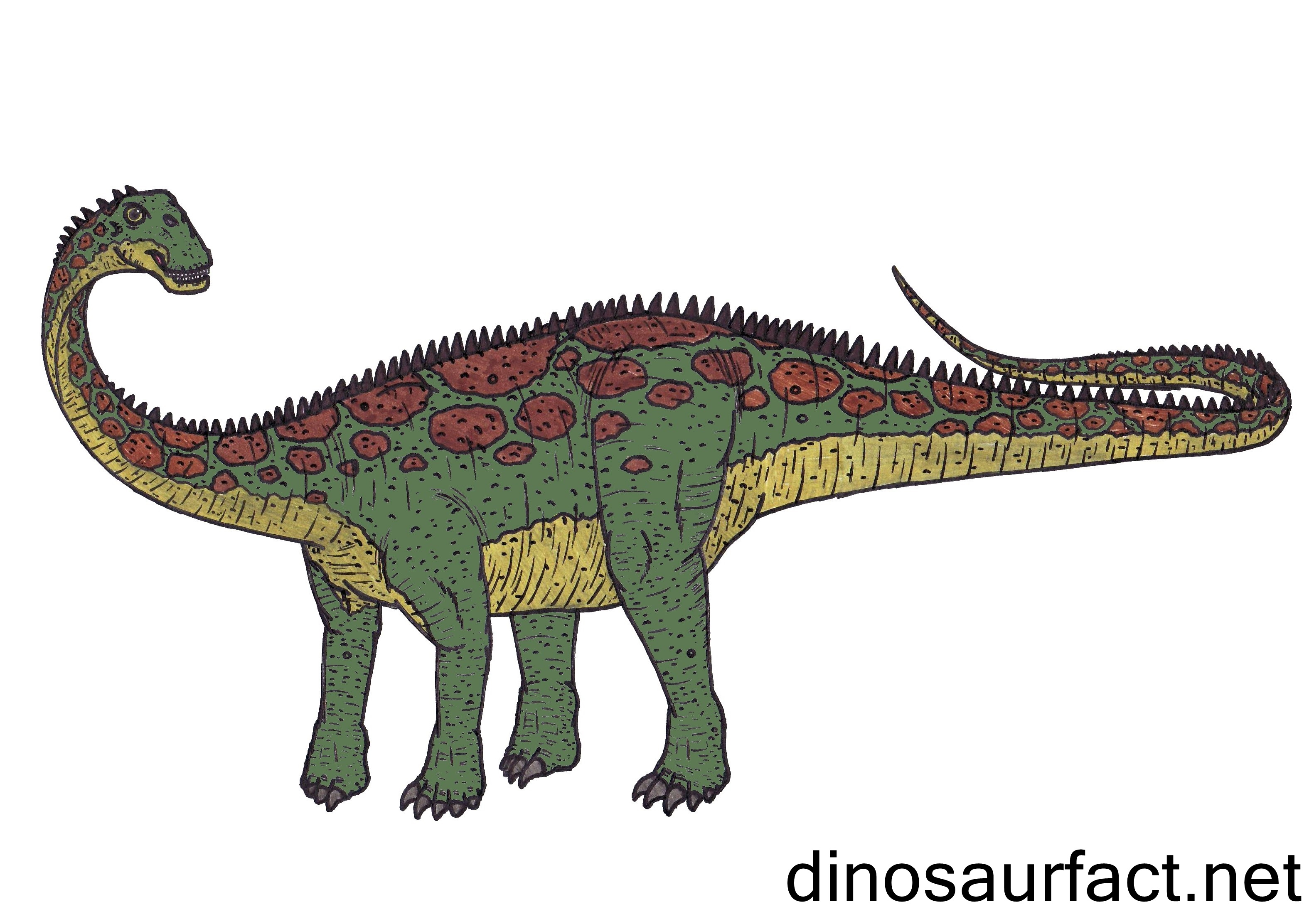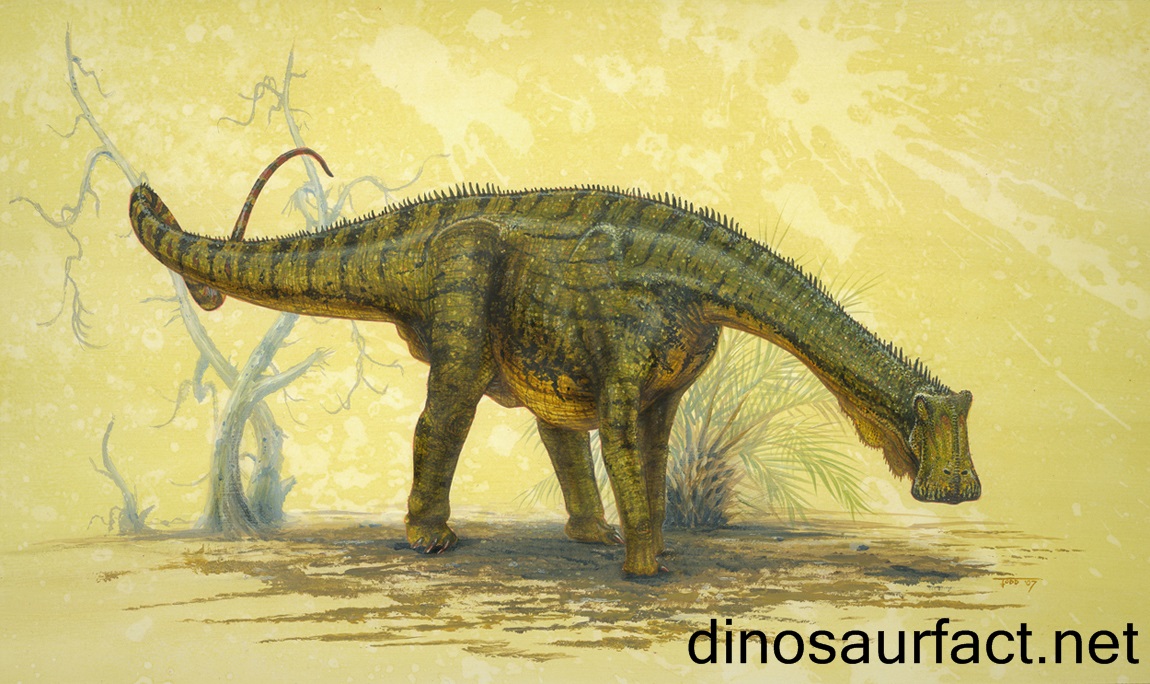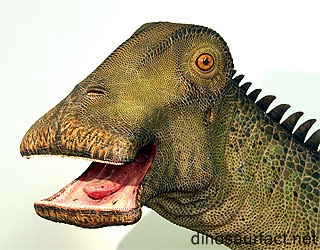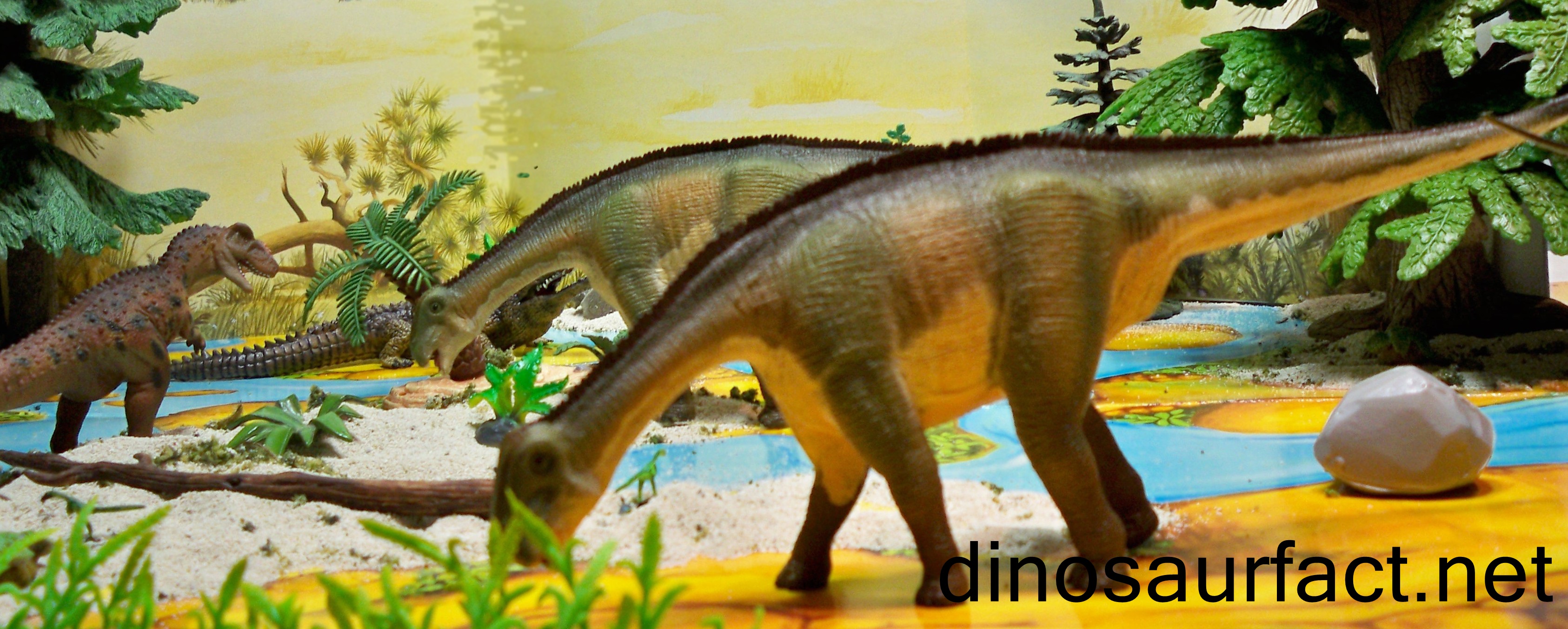 Click to visit the previous dinosaur bio
Click to visit the previous dinosaur bio
 |
|
 |
|
Kingdom: Animalia
Phylum: Chordata
SuperOrder: Dinosauria
Order: Sauropoda
SubOrder: Sauropodomorpha
Family: Rebbachisauridae
Genus: Nigersaurus
 |
|
 |
|
 |
|

The Nigersaurus was moderately large sauropodopmorph dinosaur that was existent on the earth the earlier half of the late Cretaceous period. Its remains are judged to be about 115 to 98 million years old. This phase ranges from the Aptian to the Albian and even extents in the Cenomanian ages.
This dinosaur was very unique with respect to its jaw and dentition. Its jaw was wider than its skull, which means it was expanded anteriorly, giving the dinosaur a pouty look. This jaw bore multiple layers of tiny teeth. And considering it was an herbivorous dinosaur, its diet was likely to be plants and shrubs.
Scientists have also debated about the position of the Nigersaurus’s neck. Some say that it could not raise its neck very high, which necessitated its grazing very low lying vegetation. Its short neck provides addition weight to this hypothesis. Due to this, the Nigersaurus has often been compare to a lawn mower, and its plant cutting capacity has been calculated, based on its size and number of teeth. This value is actually not very high, as its jaw muscles were no very strong. It could just about open and close its mouth and thus only ingest as much food as was necessary to sustain itself.
Nomenclature
The Nigersaurus is named after the place where its fossils were first excavated. It was found in the region of Gadaufaoua in the Republic of Niger. The suffix ‘saurus’ is derived from the Greek word ‘sauros’, which means lizard. Thus, the name of this dinosaur means ‘the lizard of Niger’.
The specific name of the reptile, N. taqueti, is chosen to honor the paleontologist who originaly found its remains, Philippe Taquet. It was described and named by scientist Paul Sereno in the year 1999.
Discovery and nature of fossils
The remains of the Nigersaurus were first discovered by Philippe Taquet, who was a French paleontologist. He led an expedition in Niger between the years 1965 and 1972. He discovered the fossils in the Elrhaz Formation of the Tegama group.
Taquet had found only a few bones at that time and reported them in 1976. Due to the scarcity of the remains and their badly preserved nature, the dinosaur remained undescribed at that time.
Better preserved fossils were uncovered during an excursion led by Paul Sereno 1997 and 2000.
Its bones were very thin and pneumatic. In fact, one of the skull fragments was so paper thin as to allow the passage of sun rays through it. It is this delicate nature of the bones that had caused them to be so poorly preserved.
No fully articulated skeleton has yet been ascribed to the Nigersaurus and no complete skull has yet been discovered either. All information available about it stems from piecing together bones from separate individuals.
Currently, apart from a few rib bones and coccygeal vertebrae, almost all bones of the Nigersaurus have been discovered.
Classification
The Nigersaurus is classified under suborder Sauropodomorpha, superfamily Diplodocoidea, family Rebbachisauridae and subfamily Nigersaurinae. When it was first discovered, it was believed to belong to family Dicraeosauridae. Superficially, its structure does resemble the members of this family. But Paul Sereno reclassified the remains based on the new fossil evidence that he had acquired.
The rebbachisaurids are among the basal most member of superfamily Diplodocoidea; they lack the bifid neural spines that the other members of this superfamily possess.
The nigersaurinanians all possess hollow, air filled bones.
Skull
The skull of the Nigersaurus was extremely unique. It is the only tetrapod to have the width of its jaws greater than the rest of the skull. Its bones were very delicate and it contained three fenestrae more than that of other sauropods. The jaws likely had a keratinous sheath towards their ends. The mandible was S shaped and the nasal openings were elongated. The teeth present on the jaws were just as striking as the skull itself. Despite of the delicate nature of the skull bine, they were strong enough to withstand the constant wear and tear of cutting plants.
Due to the singular nature of its skull, this dinosaur is referred to as ‘the Mesozoic cow’.
Teeth
The teeth of the Nigersaurus were arranged in the form of batteries. Each functional unit of the battery had 9 inchoate teeth ready to take their place. The maxilla had about 68 batteries and the mandible close to 60. Thus, at any stage, it possessed about five hundred teeth in its jaws. This number was first estimated to be 600, but now has been scaled down.
The individual teeth were elongated and curved, not being extremely sharp. Such dental arrangements are generally seen ceratopsids and hadrosaurs.
Physical features
The Nigersaurus was quite a large dinosaur, with its length being about 30 feet and it weighed close to four tons. But this size was quite meagre as compared to the giant sauropods of the Cretaceous, some which weighed 50 tons.
The size of this dinosaur is compare to modern day elephants.
The bones of the Nigersaurus were highly pneumatised, especially those of the skull and the vertebral column. The exact purpose of this adaptation is unknown. It could be have achieved to reduce their weight to allow the dinosaur better mobility. Some scientist also contest that it could have been a feature to facilitate respiration, like that of modern birds. But without soft tissue evidence, this theory seems unlikely.
Its limbs were strong and robust.
The posture of this dinosaur is still a matter of contention. Some scientists say that it held its neck very close to the ground, other maintain that it could raise its neck like other sauropods.
Its tail was long and tapering.
Habits and habitat
The Nigersaurus was an herbivorous dinosaur, just like other sauropods. Its diet likely consisted of ferns, angiosperms and shrubs. Due to the weak nature of its jaw bones, some scientist also posit that it only used its teeth to cut vegetation and then suck it in using a vacuum like action. Its gait was likely slow.
The habitat of the dinosaur comprised of the African plains and woodlands.
Related and coexisting species
The Nigersaurus is related to the Demandasaurus and the Tataouinea. It possibly coexisted with the large cretaceous sauropods and theropods such as the Carcharodontosaurus.
The final notes
If the Nigersaurus was indeed adapted to feeding on lower vegetation, scientists believe that could have been the reason for its extinction. Very high specialization hinders flexibility and thus may not work in all circumstances.
Index
Extinct Profiles
 Triassic Dinosaurs
Triassic Dinosaurs Jurassic Dinosaurs
Jurassic Dinosaurs Cretaceous Dinosaurs
Cretaceous Dinosaurs Pterosaurs
Pterosaurs Marine Reptiles
Marine Reptiles Dinosaur Extinction
Dinosaur Extinction